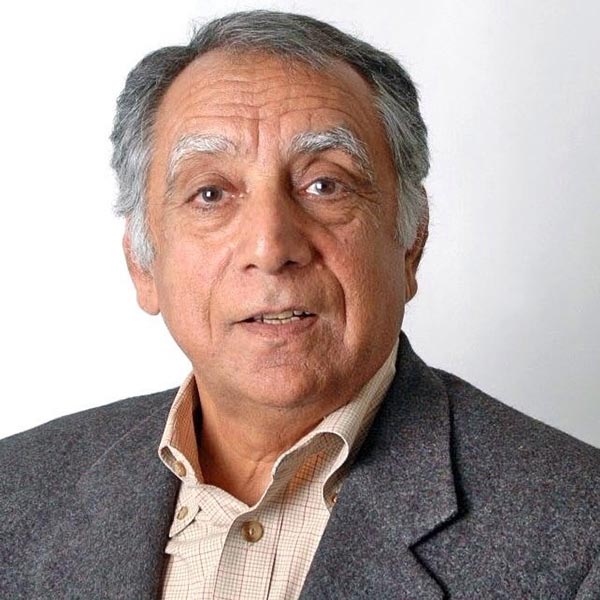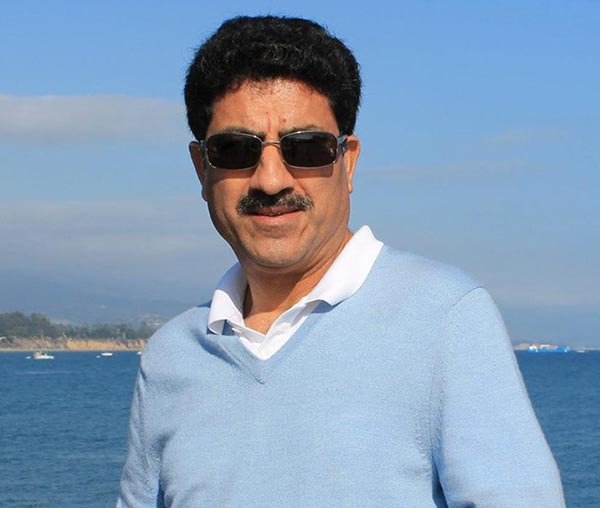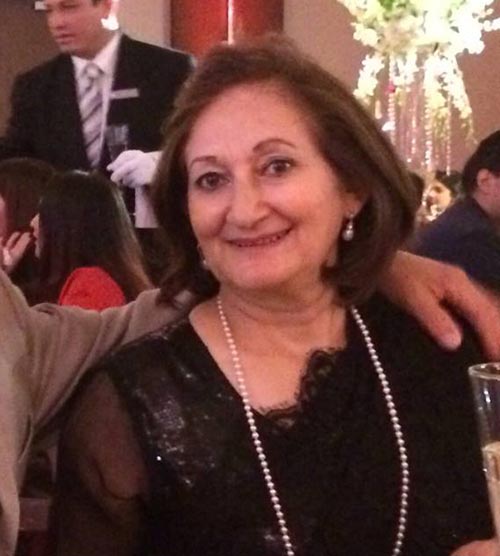Despite living successful lives thousands of miles away, their hearts beat for the motherland. Syed Asma talks to a few philanthropist NRKs who are contributing for a better Kashmir

A shovel and a hammer is all you need to start a non-profit organization, feels Majid Butt. He, along with his wife Shaheen Parray, started Kashmir American Humane Society (KAHS) in 2011. Working independently on individual basis the couple has not kept a proper record of the people they have helped so far. They get to know about the people who are in need through their friends and family living in Kashmir.
The value of sharing with others, has been inculcated in them from their family, they say. Butt is quick to mention the name of his inspiration, Ghulam Rasool Wali, his grandfather. “It is he who taught me the importance of being helpful to others,” says a soft-spoken Butt.
Born in a business family, Butt is a Burn Hall pass-out. He completed his high school, graduation and post graduation from New Delhi before flying to Los Angeles to do his Executive MBA from Loyola Marymount University.
Once done with studies, he joined health care sector in Los Angeles. Though Butt was helping people on and off at the individual level, he wanted to give it a formal shape.
After giving it a thought, “what can we do” to help the needy, he discussed “could/would/should” factors with his wife Shaheen. The outcome was start of Kashmir American Humane Society (KAHS), a non-profit organization in 2011.
KAHS is a California based tax exempt NGO working exclusively for public and charitable purposes, mostly Kashmir. Though, they aspire to work globally.
Butt introduces KAHS as “not a big organization” which sustains on donations from people, mostly family and friends. He says he is running an NGO with “unlimited needs but limited resources”!
KAHS has implemented several but simple projects like adopting a family and cater to their basic needs on a regular basis. Besides, they have been handling different medical projects across valley in collaboration with some of the local NGOs. Butt, through KAHS, has been instrumental in providing livelihood to a number of people in Kashmir.
Butt’s NGO does not have any yearly expenditure. “We do not have any paid staff or any utilities to pay,” Butt says. Every penny received in donations is utilized towards the projects in and across Kashmir. All the work is being done, supported by one’s own free will and voluntary action!

A Los Angeles-based expert of urban designing, Rafique A Khan, went to America in 1968 to study management and stayed back. For most of his career, Khan has worked for redevelopment planning in America.
After spending decades in US, Khan founded Kashmir Foundation of America (KFA), a non-profit organization in 1995. It works at the grassroots level to support the community and runs self-help projects for the people in Kashmir.
Since then KFA works on issues related to education, economic development and environmental protection in Kashmir. The NGO came to limelight after it worked tirelessly with local organizations in the wake of 2005 earthquake. It was for the first time that Kashmiri-Americans were working together for relief and rehabilitations of people in Kashmir.
Khan was accompanied by some of his (Kashmiri-Americans) acquaintances including Ather Zia, Tasneem Khan and Usmaan Rahim. Usmaan and Talal Ansari headed the relief distribution effort in Kashmir.
Khan’s major contribution is in the education sector. The overall negative approach of Kashmiris is hindering Khan’s plan of improving the quality of the public education. Kashmir Education Relief (KER) is one of his initiatives. He is concerned about the quality of education in government schools.
Khan says after hiring volunteers’ his organization provides resources to fill in the gap of mentoring the students after school hours and helps them with their homework. He wants to impart computer assisted coaching to students and conduct workshops in character building but is receiving poor response from the population.
Though they had started with many schools, but presently are taking care of only one school in Zadibal, Alamgiri Bazar.
Apart from the normal course of actions Khan played a role after the September floods, 2014 hit the Valley.
Seeing the scarcity of safe drinking water, Khan chose to provide safe drinking water. His organization purchased 130-filters for $10,000. He received the delivery in Delhi and spent four days there arranging for shipment to Kashmir. One third of the shipment was airlifted. Khan is planning to work in Kashmir on the designing of the structures, especially after earthquake 2005, but all in vain. Not a single effort has been materialized yet.

Wajahat Hafiz Dedmari stands a witness to Khan’s efforts. Dedmari a trained structural engineering settled in US for last many years considers Khan his inspiration.
Dedmari played an important role after October 2005 earthquake. Till then he used to identify a few families with modest backgrounds. But the earthquake played a game changer. He says as an engineer he could understand the reasons of the damage and knew how to rectify them.
He has done his bachelor’s in engineering from Regional Engineering College (REC), now NIT and joined government services for some time. Later, he went to Saudi Arabia for five years and then migrated to America. Studied structural engineering with main emphasis on earthquake engineering, he has been involved in the design of seismic retrofit in California. A licensed engineer in California, Dedmari now runs his own design consultancy in Los Angeles.
In 2005, besides collecting money in America and sending it to Kashmir, he worked on the design of temporary and semi permanent shelters for the people who lost their homes.
These shelters were extensively used in Kashmirs across the borders. After 2014 floods, he designed temporary and semi permanent shelters for the people of Kashmir.
“I was sitting at the Heathrow airport waiting for my connecting to Delhi when I designed some of these shelters,” remembers Dedmari. He provided his expertise to a number of NGOs working to rebuild the flood devastated Valley.
“Many NGOs tried to adopt the Uttrakhand model of shelters in Kashmir but I was convinced them that they would be a failure. I changed their design and helped them to come up with a design that suits Kashmir,” says Dedmari.
Recently in collaboration with Khan’s KFA, Dedmari designed a model house based on our traditional dajhi dewari and taak system. The uniqueness of the design is that no timber will be used.
It is designed for the earthquake forces using the latest American Building codes, he asserts. Concerned over the fact that Kashmir falls in seismic zone 4 and 5, Dedmari says he is trying to convince people to take this warning seriously and work on making their structures safer to some extent at least. But, he adds, people don’t care, not even the professionals (engineers).
“I am afraid of the day when, God forbid, a higher Richter scale quake will hit the city. The damage would be beyond imagination!”
After the floods, he made public a chart showing how a homeowner can check his house for the structural damages and establish whether it is safe to move in or not.
Besides, he presently takes care of numerous students who are studying in different professional colleges in Kashmir and different parts of India. He prefers to support above average students living in the border areas.

Asmat Ashai runs an NGO from US, Funkar International—seeking to promote, preserve Kashmiri language through music and art.
“We seek musicians with talent and help them,” says Ashai. Presently, Bilal Matta and Irfan Nabi are part of her contacts in Srinagar. Ashai helped them set up Mizraab School of Music with eminent financial, logical support.
Ashai dreams of preserving Kashmiri language through music and art. “We have taken Kashmiri music to the world and aspire to do much more.” They so far have produced five audio CD’s which are available online throughout the world. Kashmiris, she feels, living in valley do not realize the danger of the decline of their language.
“I can feel it when I see them encouraging their children to speak in Urdu,” Ashai asserts. Keeping in view the same, Ashai is seen encouraging the language in different way.
Another project she is working on is children’s illustrated books in Kashmiri. Recently in collaboration with the American musicians Ashai organised Kashmiri music concert, featuring Bilal Matta, Irfan Nabi, and Mahmeet Syed from Kashmir. They were given a chance to performing with George Lawler and Habib Wardak from Chicago.
One of them taught his students Kashmiri songs – thus introducing Kashmiri to the world.
The artists performed in cities including Maryland, New York, Buffalo New York, Dallas Texas, Los Angeles, Virginia and Washington DC.















